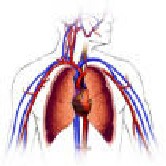
WEDNESDAY, Nov. 16 (HealthDay News) — Balloons coated with a drug used to open blocked stents in heart arteries restore blood flow and also reduce bleeding in some high-risk patients, new research shows.
Bare-metal stents, implanted to keep a blood vessel in the heart open during angioplasty, can narrow over time as scar tissue develops, which restricts blood flow and requires another procedure to widen the vessel, the researchers say. They were to present their findings Wednesday at the American Heart Association’s annual meeting in Orlando, Fla.
“Drug-eluting [emitting] balloons is, in my opinion, the therapy of choice in case of bare-metal stent restenosis and should be also considered in treating patients with stenosis of native coronary arteries, especially with a high risk of bleeding,” said the lead researcher of both studies, Dr. Mariusz Zadura, a senior cardiologist at the Heart and Diabetes Center of Mecklenburg-Vorpommern in Karlsburg, Germany.
“Drug-eluting balloons are as effective in the daily practice in real life conditions in treating bare metal stent restenosis,” he added.
In the procedure, a catheter with a drug-coated balloon is passed through the narrowed stent to restore blood flow. The procedure leaves behind the drug, which acts to prevent the stent from renarrowing.
For the first study, Zadura’s team studied the responses of 84 patients who had narrowed bare metal stents reopened. The balloons used in the procedure were coated with the drug paclitaxel, a cancer drug also used to prevent blocking of arteries.
In all, 91 stented arteries were treated. After six to nine months, the balloon kept 85 of the arteries open.
New blockages occurred in six stented arteries, but only three patients needed an additional procedure, the researchers noted.
In the second study, the team followed 63 patients who were at high risk of bleeding. These patients were being treated with anti-clotting drugs for other medical problems, such as mechanical heart valves, atrial fibrillation and pulmonary embolism.
These patients also had narrowed stented arteries. Over six to nine months, drug-coated balloons were effective in keeping 69 of 73 narrowed arteries open.
Although narrowing occurred in four stents, only two patients needed another procedure, the researchers reported.
Using the drug-eluting balloon is better than using drug-eluting stents, according to the researchers.
Patients treated with drug-eluting metal stents need daily aspirin and other anti-clotting drugs for at least one year, which can increase the risk of bleeding, the researchers said.
However, they said, patients treated with a drug-coated balloon only need to take dual anti-clotting therapy for one month.
Dr. Gregg Fonarow, a professor of cardiology at the University of California, Los Angeles, and a spokesman for the American Heart Association, said that “drug-eluting stents significantly attenuate scar formation and the need for repeat procedures; however, dependency on prolonged dual anti-clotting therapy and late-stent thrombosis have led to investigations of alternative treatments.”
In recent years, drug-eluting balloons have emerged as an alternative to drug-eluting stents to address blocking of arteries and avoid the need for prolonged dual anti-clotting therapy. Paclitaxel is used to coat the balloons and minimize cell growth, he said.
“Drug-eluting balloon technology has been demonstrated to be safe and potentially efficacious in small studies,” Fonarow said.
“Both these patient series showed very good efficacy and safety. These promising findings should be further evaluated in prospective randomized clinical trials,” he said.
The studies received no external funding, Zadura said.
Because the research was presented at a medical meeting, the data and conclusions should be viewed as preliminary until published in a peer-reviewed journal.
More information
For more information on angioplasty, visit the U.S. National Heart, Lung, and Blood Institute.

